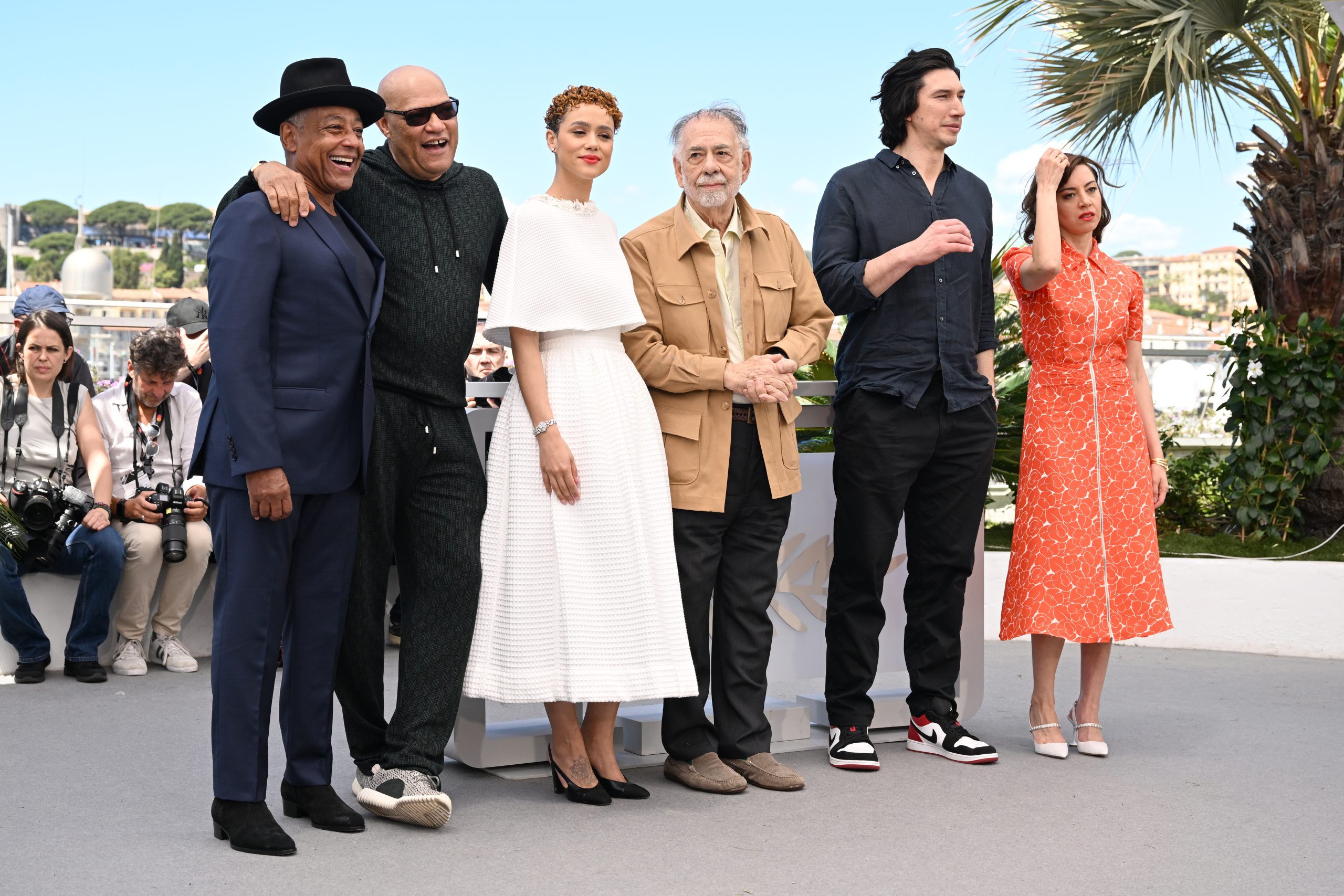
Francis Ford Coppola’s decades-in-the-making sci-fi epic “Megalopolis” premiered at the 77th Cannes Film Festival to a 10-minute standing ovation, marking a significant moment in the legendary director’s career. The film represents not only Coppola’s triumphant return to cinema but also stands as a testament to his unwavering artistic vision.
The journey of “Megalopolis” to the screen is almost as epic as the film itself. Coppola first conceived the idea in 1977 during the filming of “Apocalypse Now.” Development began in earnest in 1983, with Coppola assembling 400 pages of notes and script fragments in just two months. Over the following decades, the project was postponed multiple times, including after the September 11 attacks when footage Coppola had shot in New York became uncomfortably similar to the tragic events.


At the Cannes press conference, Coppola described the premiere as “a crowning joy” after “all these years of having an idea and building it over different time and abandoning it and then saying no I shouldn’t abandon it.” This sense of relief and fulfilment was palpable as the 85-year-old director basked in the audience’s enthusiastic reception.

What emerged as one of the most revealing aspects of the press conference was Coppola’s emphasis on collaboration. Despite having worked on the concept for 40 years, the director didn’t simply execute a predetermined vision. “This movie was a collaboration between everyone here,” Coppola stated. “When you make a film like this, you don’t know how to do it… The movie makes itself, and everyone participates.”
Adam Driver, who stars as visionary architect Cesar Catilina, confirmed this approach: “The assumption would be that you think of something for 40 years and then you go in and execute… but it’s the total opposite of that, and it speaks to Francis’s generosity.” This collaborative spirit extended beyond performance into the actual creation of the film, with actors sometimes writing scenes that would be incorporated into the final product.

Coppola’s theater background heavily influenced his directorial style on “Megalopolis,” creating an environment where actors could improvise and contribute to the storytelling. As Driver noted, “It felt like experimental theater, and that’s what made it feel rebellious and exciting.” This approach was echoed by Nathalie Emmanuel, who plays Julia Cicero: “It almost felt like we are all playing different instruments of an orchestra and we had to have our conductor tell us when to be louder, go quieter, faster, slower.”
Laurence Fishburne, who has worked with Coppola since “Apocalypse Now” in 1976 when he was just 14 years old, described the director’s approach: “Every day Francis allowed us to be free but then gave us a directive… He’s open enough to allow his channel to figure it out with all of us.” This balance between freedom and guidance created an environment where actors could take creative risks while still serving the overall vision.

The film draws parallels between ancient Rome and modern America, examining the potential downfall of democracy. Set in an alternate New York City called “New Rome,” the story follows an idealistic architect with bold visions for the future who clashes with a conservative mayor, played by Giancarlo Esposito. “America was founded on the ideas of the Roman Republic,” Coppola explained. “What’s happening in America, in our Republic, in our democracy, is exactly how Rome lost their Republic thousands of years ago.”
To bring this vision to life, Coppola reunited with cinematographer Mihai Mălaimare Jr., who previously worked with him on “Youth Without Youth,” “Tetro,” and “Twixt.” The film’s score was composed by Osvaldo Golijov, which Coppola described as having “a lot of rhythm” due to the film’s themes about time. Despite being set in New York, filming took place predominantly in Georgia due to more favorable tax incentives, with Coppola explaining that New York’s subsidy system is “not anywhere near as attractive” because it requires working with overpriced local studios and institutions.


Perhaps most striking is Coppola’s cavalier attitude toward the financial risk he took in self-financing the $120 million production. He sold a stake in his winery business to fund the film, explaining at the press conference: “I don’t care. I never cared about money.” He elaborated that his children have successful careers and don’t need an inheritance, adding philosophically, “What’s important are friends because a friend will never let you down. Money may evaporate.”
As for whether he might revisit and re-edit “Megalopolis” in the future, as he has done with several of his past works, Coppola didn’t rule it out: “If there’s a way I can make the film a little better, I will try.” However, he added that he’s “already started writing another film,” suggesting he’s ready to move forward with new creative endeavours.

Aubrey Plaza, who plays TV presenter Wow Platinum, captured the uniqueness of the project when she remarked, “I don’t think that there’ll be something that imaginative on that scale again.” This sentiment encapsulates why “Megalopolis” stands apart in contemporary cinema—it represents the rare achievement of a truly independent, large-scale vision from one of film’s greatest auteurs, brought to life through sheer determination and artistic conviction.


Despite mixed critical reception following its premiere, “Megalopolis” stands as a testament to Coppola’s enduring belief in cinema’s power to “illuminate contemporary life” and inspire hope. As he explained in the press conference, “I think it’s the role of the artist of films to shine light on what’s happening in the world.” With “Megalopolis,” Coppola has done exactly that, creating a film that reflects both his personal artistic journey and his perspective on humanity’s potential future.
Editor in Chief of Ikon London Magazine, journalist, film producer and founder of The DAFTA Film Awards (The DAFTAs).




